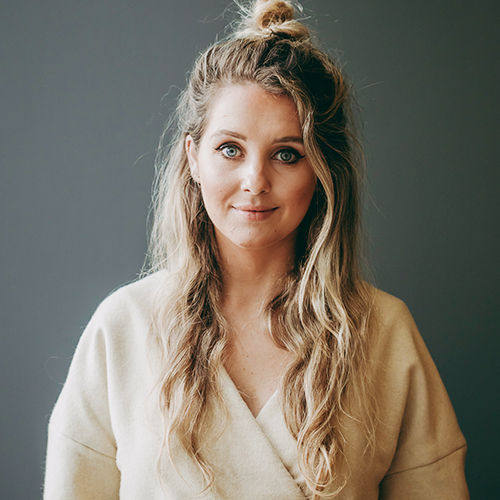


Esther Knight
Designer
Label - Fanfare
We have a 360-degree approach to sustainability
Fanfare Label is a UK-based circular clothing brand changing the way people buy, wear and consume clothing. The award-winning clothing brand was launched in 2018 by Esther Knight. In an interview with Fibre2Fashion, the designer talks about her brand, its aesthetics, and the sustainable practice approached by the brand.
Fibre2Fashion : What drew you to the fashion industry and inspired you to launch your own brand?
Esther Knight:
I have worked in the fashion industry for over 10 years now within buying, working for many high street and designer brands including Vivienne Westwood. As a buyer, you are responsible for everything in a production line; you take the entire process from sketch to store. Therefore, if there is an unethical part of the supply chain, buyers’ impact it directly. Buyers are trained to hit margin targets no matter what the cost is to people, or the environment, and I was witnessing first-hand all the unethical behaviour from the industry. It has become a race to the bottom on cost, resulting in corner cutting and we are seeing globally vulnerable people and children in slavery situations. But fashion doesn’t have to be this way. I realised I couldn’t be part of this industry in the same way anymore. Rather than leaving it, I decided to create a business that tackled this issue head on. That’s when Fanfare Label was born.
Fibre2Fashion : How would you describe your collection’s aesthetics?
Esther Knight:
With a unique appreciation for craft, quality and a focus on environmental responsibility, Fanfare Label encourages considered design – sharing our knowledge of the environment, social community development, and the celebration of nature to educate responsible shopping behaviour.
Fibre2Fashion : Could you please elaborate on the fashion culture and highlights in the United Kingdom?
Esther Knight:
As a buyer, you are the one that’s selecting fabrics and the one picking the suppliers. You’re the one that is contributing to the sustainability aspects – or lack thereof – in a product. So, if there’s an unethical part of the supply chain, you tend to know about it.
Fibre2Fashion : Could you please take us through the design process for your recycled denim collection, as well as your entire collection?
Esther Knight:
The exorbitant amount of waste generated in the fashion industry inspired me to represent the circular economy standard; Fanfare Label is a representative of what fashion could and should look like.
Fibre2Fashion : Sustainable ensembles come with a price. Your take on it?
Esther Knight:
Yes, it does. It is because in order to produce a sustainable garment so much more has to be considered in the process. We have a 360-degree approach to sustainability which means every aspect of the supply chain and how we run our business has to be considered. That is why I like the phrase ‘Slow Fashion’ – the idea of slowing down and considering everything, every part of the supply chain in order to achieve responsible business practices. This obviously takes huge amounts of time, people, and other resources, which come at a cost. Additionally, it has to be ensured that planet and people are protected, and workers are fairly paid. Naturally, this all results in a garment being more expensive.
Fibre2Fashion : What sustainable practices are approached by your brand and how do you select the materials you use?
Esther Knight:
We use our clothing to educate and encourage a change in mindset towards fashion, promoting a sustainable approach to our customers, inspiring a mentality of ‘buy to last’ and to not regard any fashion piece as disposable.
Fibre2Fashion : With so many sustainable brands coming into the picture, how do you ensure your label stands out?
Esther Knight:
Fanfare Label combines bold and contemporary designs with repurposed and reused materials, designed to create a wardrobe of sustainable clothing that is made to last. The uniqueness of the garments is in their recycled nature, combining new and old to create a piece that has a lasting impact.
Fibre2Fashion : What will be the biggest fashion trends that can have the highest influence over fashion enthusiasts?
Esther Knight:
Currently, the biggest influence is the social media which builds pressure to constantly update your wardrobe. Such challenges are set to increase as clothing consumption globally is projected to rise by 63 per cent by 2030. Second is the circular business models which shift the perception away from throwing clothes away. Third is educating consumers on avoiding short-lived pieces, and investing in durable, sustainable products that are seasonless. This will lead to our customers buying fewer, better-quality pieces, and therefore protecting the planet.
Fibre2Fashion : According to you, what should be considered when purchasing clothing?
Esther Knight:
From a consumer point of view, the main priority is education and understanding that spending a little more money on a piece of clothing increases its longevity and value. In turn, we should remember to buy to last and our affection for what we buy stands the test of time. Finally, it is important to be conscious of the harmful impacts of the fashion industry without encouraging guilt.